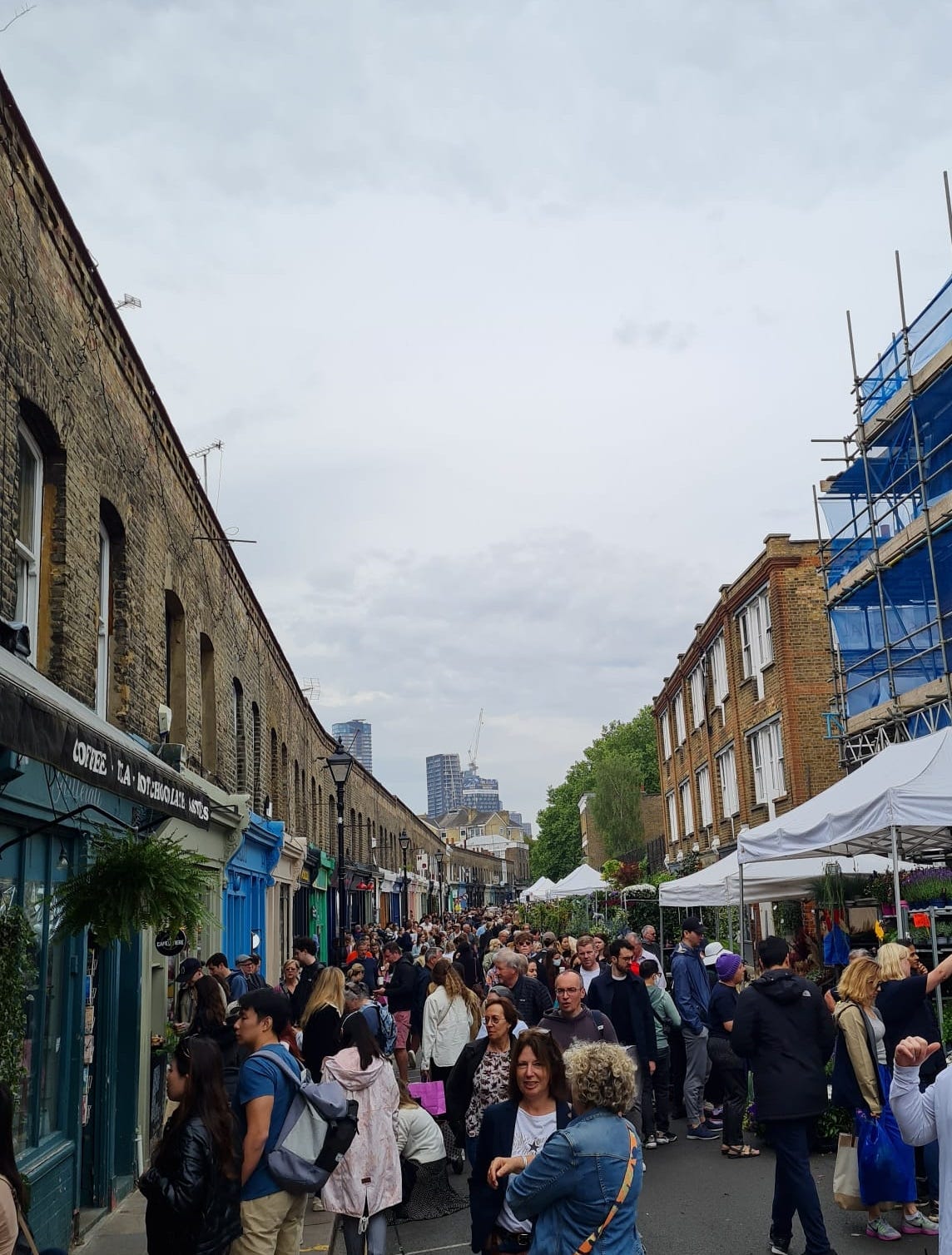May 15, 2022, Hackney, London
My experience in horticulture is as follows; during the two years I worked at my first real office job, I diligently looked after a cactus that sat on my desk. Every week or so I would gently and lovingly pour a mug full of water into the plant. Over the first few weeks I fretted about the new-born that was sat bathing in the light of my computer screen.
Towards the end of my time in that first real office job, a colleague walked up to my desk, picked up the plant, and pointed out that it was plastic.
Then in the first lockdown I bought a sunflower, and began examining the two rose bushes in my garden with a keen eye, debating whether to prune them. I rang my dad and step-mum, two people who can actually tell you what flower you’re looking at.
“Prune it lots,” my dad confidently stated, “it’ll grow back even bigger.”
“Don’t listen to a word he says,” my step-mum chimed in, “when your dad prunes things, they die.”
So I left the rose bushes and they grew into rose trees. They then developed a lean more frequently seen on pensioners who used to work down the mines. Not long after that, the sunflower died.
So I went to the Columbia Road Flower Market with a sense of trepidation. Mainly because of my chequered history with plants, but also because the last time I went, back before I even lived in London, I felt like a cow being shoved through a cramped and sweaty passage, vendors squeezed on either side, to the inevitable and final slaughter. If the slaughter was buying £10 for a bunch of tulips, at least.
But whether this is pandemic-related or not, the market has changed, with vendors only clogging up one side of the road, leaving the rest of the street to edgy east Londoners and families with fourteen small children and at least three dogs.
We had other plans that day, which I used as my excuse not to buy a cactus or sunflower I would almost certainly subject to an early demise, and instead had a scone from the wonderful Lily Vanilli bakery. If you want to go to Columbia Road but you live in a studio flat that gets no light, or are similarly feared by daffodils the world over, go to this bakery instead. It took all of me not to leave there with a box full of their wonderful brownies.
Then, because the scone was clearly not enough food, we made our way to Victoria Park food market. Since my first visit in the November 2020 lockdown, I’ve been slowly eating my way around all of the market’s vendors.
There’s Calamari Canteen, which is good at exactly what you think it would be good at. Or Filigrillz, if Filipino food is more your speed, who gave me a free sample of their pork belly which made me weak at the knees.
There’s also gourmet scotch eggs, pastries galore, donuts, pints, and even a dog food stall, whose produce I can’t say I’ve tried. This time I went for a coconut chicken curry, which won my affections by being something I could actually smell.
I’ve talked before on this blog about my terrible nose, so the fact that I could smell this curry and that it also smelled fantastic meant it was the only choice. It didn’t disappoint.
Our final appointment of the day wasn’t food or flora based. As the rain really started to fall (since the day was forecast to be a lovely spring day in London) we ran into the Vagina Museum.
The Vagina Museum formerly sat in the middle of Camden Market, but they have moved and have now set up shop in what looks like an old warehouse in Bethnal Green. It’s free, unlike the famous Museum of Penis in Amsterdam, but I’m afraid the Vagina doesn’t knock the Penis off the top spot of my list of favourite museums about genitalia. And I promise that isn’t the patriarchy talking.
They have what was described as a temporary exhibition about periods, and while this is really quite interesting (I learned that Aristotle thought babies were made by combining menstrual blood with semen, which is a great fact because it’s both fascinating and gross), it’s mainly quite a lot of boards full of information without too many actual exhibits.
Their permanent exhibition, though really quite small, was diverting, those hoping for an eyeful of vulva wouldn’t be disappointed. There’s a huge wall focused around pictures of vaginas with the general message: yours is normal too. A wave of relief swept through me.
Sarcasm aside, the Vagina Museum is important and I hope it gets some more funding so it can become even bigger and better. And I am aware that as a straight man in his twenties, I’m not exactly their target demographic.
Though, considering when I was younger, I put my hand up to ask whether the boys on the school trip also needed to bring tampons, perhaps I am in in their crosshairs after all.





